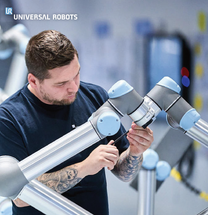Sep 19th 2024
Strategic Advantages of Robotic Automation in Manufacturing
Businesses are constantly seeking ways to enhance productivity, reduce costs, and stay competitive. Robotic automation is emerging as a key investment that can help manufacturers achieve these goals. However, deciding whether automation is the right move for your operation requires a thorough understanding of its potential benefits and a well-constructed justification process.
Why Consider Robotic Automation?
Traditionally, the primary drivers for automation were reducing labor costs and streamlining processes. While these remain important, the focus has now expanded to improving overall business operations. Robotic automation can significantly impact ten key areas that either decrease costs or increase margins, providing a robust foundation for justifying the investment.
Key Metrics to Build a Strong Case
1. Labor Savings: Direct labor savings remain one of the most straightforward metrics for justifying automation. By calculating the total annual labor hours saved and multiplying it by the standard cost per labor hour, businesses can quantify the financial benefits. It's important to include burden costs, such as wages and benefits, to present a comprehensive picture.
2. Rework and Scrap Savings: Automation can lead to significant improvements in the quality of work, resulting in reduced rework and scrap costs. These savings can be calculated by analyzing the reduction in rework hours and the percentage improvement in yield, offering a clear view of cost-of-quality improvements.
3. Warranty and Inventory Savings: Reducing warranty claims and optimizing inventory carrying costs are critical areas where automation can provide substantial savings. By improving the quality and consistency of production, businesses can lower warranty costs and reduce the expenses associated with storing unsold goods.
4. Floor Space and Capacity Gains: In facilities where space is limited or expensive, automation can free up valuable floor space, leading to additional savings. Moreover, automation can increase production capacity, allowing manufacturers to meet growing customer demands and improve top-line revenue.
5. Customer Retention and Insurance Savings: Automation can enhance customer satisfaction by improving product quality and delivery times, which in turn helps retain key customers. Additionally, automating hazardous tasks can reduce workplace injuries, leading to lower insurance premiums.
6. Employee Retention: By automating repetitive, dull, and dangerous tasks, companies can improve the work environment, reduce turnover, and save on the costs associated with hiring and training new employees.
Financial Justifications and ROI Calculations
To build a compelling case for robotic automation, it's crucial to present a clear return on investment (ROI). Here are four primary methods:
1. Simple Payback: This method calculates the time needed to recoup the initial investment by dividing the total cost by the annual savings. While simple and easy to understand, it doesn't account for long-term cash flows.
2. Internal Rate of Return (IRR): IRR offers a more sophisticated approach by calculating the "interest rate" that the investment generates, providing a clearer picture of long-term profitability.
3. Return on Assets (ROA): This metric measures how efficiently a company uses its assets to generate after-tax earnings, offering insights into the overall impact of the automation investment.
4. Overall Equipment Effectiveness (OEE) and Overall Labor Effectiveness (OLE): These metrics measure the availability and utilization of manufacturing equipment and labor, making them particularly relevant in today's volatile and complex environment.
Beyond Financials: Strategic Benefits of Automation
While financial metrics are critical, it's also essential to consider the strategic benefits of automation. Flexible and collaborative automation can help companies:
- Adapt to changing customer demands with greater flexibility.
- Customize products efficiently, even with high variability and short product life cycles.
- Improve the quality of work life, leading to higher employee satisfaction and lower turnover rates.
Robotic automation presents a compelling opportunity for manufacturers to enhance their operations, reduce costs, and improve profitability. By carefully analyzing the direct and indirect benefits and using the appropriate financial metrics, businesses can build a strong case for investing in automation. The result is not only a more efficient and cost-effective operation but also a strategic advantage in an increasingly competitive market.
For those ready to explore the benefits of flexible automation further, tools like the Cobots ROI Calculator can provide valuable insights and support in making informed decisions. Embrace the future of manufacturing with robotic automation and position your company for long-term success.
Ready to take your manufacturing operations to the next level? Don’t let your competition get ahead—explore the transformative benefits of robotic automation today. Contact us at 1-888-600-3080 to start your journey towards increased efficiency and profitability, and let’s build the future of your business together.

